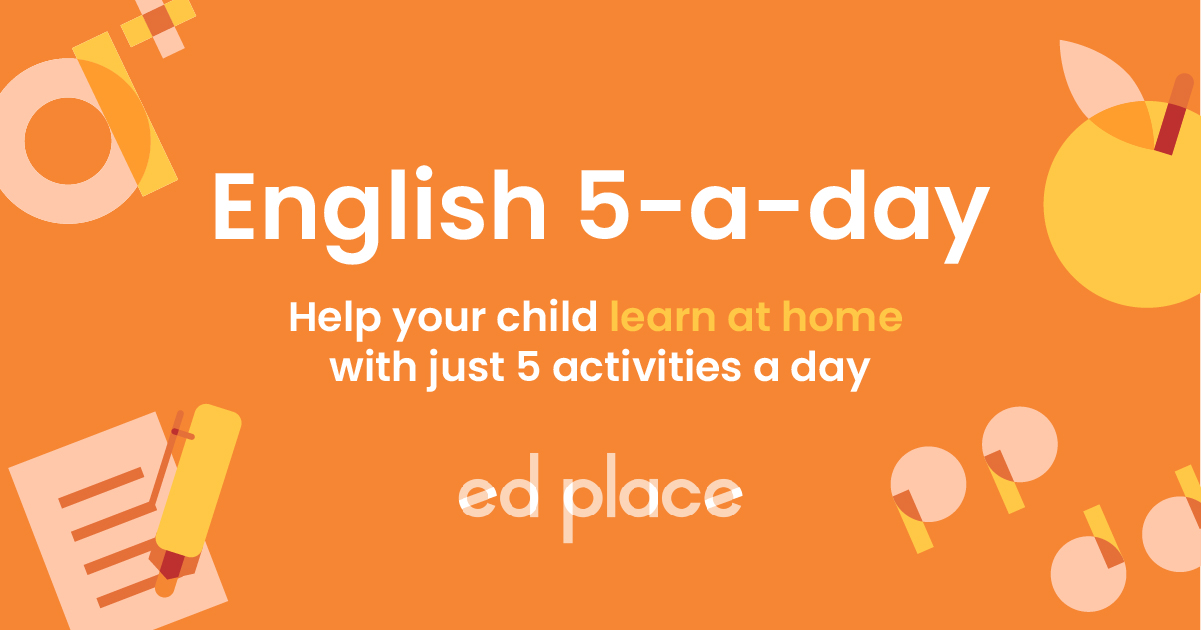
EdPlace's Year 9 Home Learning: Understanding Poetry
Looking for short lessons to keep your child engaged and learning? Our experienced team of teachers have created English, maths and science lessons for the home, so your child can learn no matter where they are. And, as all activities are self-marked, you really can encourage your child to be an independent learner. Get them started on the lesson below and then jump into our teacher-created activities to practice what they've learnt. We've recommended five to ensure they feel secure in their knowledge - 5-a-day helps keeps the learning loss at bay (or so we think!). Are they keen to start practising straight away? Head to the bottom of the page to find the activities.
Now...onto the lesson!
Understanding Poetry
If we think back to our time in school, many of us remember poems being like riddles. What is the poet really trying to say here? The colour ‘red’ is used repeatedly, but what does this suggest? We teach our children to read in a very literal way and then give them a poem that requires that they infer meaning and read between the lines. Here, we will explore how reading poetry can be made accessible, fun and inspiring for children.
Every good lesson has a purpose or an objective. We’re confident that if you follow the step-by-step approach below, your child will be able to:
1) Understand how to read a new poem
2) Identify the poetic techniques used to create meaning
3) Explain the effect that these techniques have on the reader! (If they've really cracked it.)
Step 1: Get to Grips with Key Terminology
Before we try to unpick a poem, it’s important to check that your child understands what the key terminology means.
Two of the most common poetic techniques used to create imagery and meaning are metaphor and alliteration.
1) A metaphor paints a picture by saying that something is something else. For example, the compliment ‘you’re an angel’ suggests that someone has done something wonderful for you.
2) Alliteration repeats the same letter or sound within nearby words. For example, ‘we saw a snake slithering by’. This focuses the reader's attention on that specific line in the poem and develops the desired tone or rhythm.
Step 2: How Should You Approach Analysis?
Before looking into the deeper meaning of a poem, it's important to understand the simple meaning. What does this poem literally mean? What is happening in each stanza? First, read the title and focus on any words you know the meaning of. Using the poem ‘The Song of the Old Mother’ by WB Yeats as an example, we can say that the poem is about an old woman describing the chores that she does every day.
The Song of the Old Mother
I rise in the dawn, and I kneel and blow
Till the seed of the fire flicker and glow;
And then I must scrub and bake and sweep
Till stars are beginning to blink and peep;
And the young lie long and dream in their bed
Of the matching of ribbons for bosom and head,
And their days go over in idleness,
And they sigh if the wind but lift a tress:
While I must work because I am old,
And the seed of the fire gets feeble and cold.
Step 3: Identify Poetic Techniques
Once your child has understood the basic meaning of the poem, they can then start to look for poetic techniques such as metaphor and alliteration. If we use the poem ‘The Song of the Old Mother’ again, we can see that both of these techniques have been used:
The metaphor ‘the seed of the fire flicker and glow’ creates a vivid image of the fire growing from a tiny spark to a full-grown fire.
Alliteration is used to contrast the hard work of the old woman with the life of the young people. In ‘the young lie long’ the repeated ‘l’ sound creates a lazy, languid feel to emphasise the carefree, idle lifestyle of the younger generation in comparison.
Step 4: Over to You!
Why not have a go at finding some poetic techniques? Get your child to read ‘Time Out’ by Jana Ghossein and ask them to jot down any techniques you both spot.
Time Out
Help, how much my heart hurts
my mouth is as dry as a desert
my throat is sore
my voice is a goner
my heart is beating as fast as a tiger
my hand is a rattling snake
my face is a tomato
bye bye, boring life
I cannot take it no more
I lay my head
upon my knee
now blow the whistle referee
Step 5: Activities
Now that you’ve both attempted to identify poetic techniques within one poem, see if your child can apply this skill to the following 5 activities. Have them complete them in the order listed below. All activities are created by teachers and automatically marked.
All activities are created by teachers and automatically marked. Plus, with an EdPlace subscription, we can automatically progress your child at a level that's right for them. Sending you progress reports along the way so you can track and measure progress, together - brilliant!
Activity 1 - Revise Poetic Techniques
Activity 2 - Use Figures of Speech: Simile, Metaphor and Personification
Activity 3 - Poetry to Analyse Meaning: 'The Song of the Old Mother'
Activity 4 - Read Poetry to Analyse Meaning: 'The Way Through the Woods'
Activity 5 - Read Poetry to Analyse Meaning: 'Tich Miller'
Answers
Metaphor: my hand is a rattling snake
Alliteration: bye bye, boring life
Simile: my mouth is as dry as a desert








